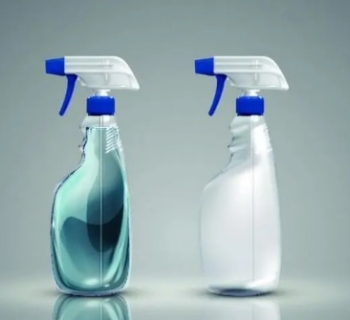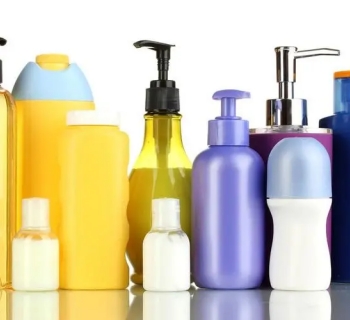SLS Sodium Lauryl Sulfate is a widely used surfactant commonly found in personal care products, cleaning agents, and industrial applications. Its chemical structure endows it with excellent wetting, emulsifying, and cleaning abilities, making it a key component in many daily necessities. However, SLS may also cause skin irritation, so when using products having this ingredient, it is necessary to make moderate adjustments based on individual skin type and frequency of use.
Efficient cleaning ability:
SLS has excellent wetting, emulsifying, and cleaning abilities, which can effectively remove oil, dirt, and other impurities.
Its molecular structure enables it to form an emulsion between water and oil, thereby helping to remove oil and dirt from the skin, hair, or surface of objects.
Good foam property:
SLS can produce rich and delicate foam, which makes it popular in detergent, shampoo, shower gel and other products.
Foam not only improves the sensory appeal of the product, but also helps to evenly distribute the active ingredients, making it easier to contact stains.
Easy to configure:
SLS is easy to mix with water and other surfactants, and can be easily formulated into various liquid and solid detergents.
It remains stable over a wide pH range, making it suitable for compatibility with multiple formula components.
Cost effectiveness:
SLS is one of the surfactants with a large production volume, so it is usually relatively inexpensive and has high cost-effectiveness.
This makes it the preferred surfactant in many commercial and personal care products.
Environmental safety:
Although SLS may have certain environmental impacts in certain situations, it is still widely considered safe and widely used in many countries and regions.
However, due to its slow biodegradability, excessive use or improper handling may lead to its accumulation in the environment.
Irritability:
Although SLS is considered safe in many applications, it may cause irritation to the skin, eyes, or respiratory system of certain individuals.
Therefore, when using products containing SLS, especially for people with sensitive skin, it is recommended to conduct skin testing.
Technical Parameter of SLS Sodium Lauryl Sulfate
Product Name | Short Name | Molecular weight | PH | CAS | Appearance |
Sodium Lauryl Sulfate | SLS | 288.38 | N/A | 151-21-3 | White powder |
Detergents: SLS plays an important role in detergents, such as toothpaste, shampoo, shower gel, soap, detergent, laundry detergent, etc. Due to its strong foaming and degreasing abilities, it is widely used to clean various surfaces and remove stains.

SLS applied to detergents
Personal care products: SLS is also commonly used as a surfactant in personal care products. However, due to its irritancy, sensitive and dry skin should be used with caution.

SLS applied to personal care products
Industrial applications: In the industrial field, SLS is also used as an emulsifier, dispersant, wetting agent, etc., for various chemical reactions and process processes.

Company Profile
NANOTRUN(www.rboschco.com) is a trusted global chemical material supplier & manufacturer with over 12-year-experience in providing super high-quality chemicals and nanomaterials, including boride powder, nitride powder, graphite powder, sulfide powder, 3D printing powder, etc.
The company has a professional technical department and Quality Supervision Department, a well-equipped laboratory, and equipped with advanced testing equipment and after-sales customer service center.
If you are looking for high-quality SLS Sodium Lauryl Sulfate, please feel free to contact us or click on the needed products to send an inquiry.
Payment Term
L/C, T/T, Western Union, Paypal, Credit Card etc.

Shipment Term
By sea, by air, by express, as customers request.
Storage Conditions:
Sealed container: SLS should be stored in a well sealed container to prevent air, moisture, or other impurities from entering. Inappropriate packaging may cause SLS to absorb moisture, clump, or deteriorate.
Avoid high temperatures: SLS should be stored in a cool, dry room, away from direct heat sources and direct sunlight. High temperatures may cause the decomposition of SLS or accelerate its oxidation process, thereby affecting its performance.
Avoid contact with incompatible substances: SLS should be stored separately from other chemical substances, especially those with oxidizing, reducing, or acid-base properties. These substances may undergo chemical reactions with SLS, leading to performance degradation or the production of harmful substances.
Pay attention to storage period: Although SLS usually has high stability, long-term storage may still lead to performance degradation. Therefore, the manufacturer's recommended storage period should be followed, and the quality of SLS should be regularly inspected and evaluated.
Proper handling and handling: Safety operating procedures should be followed when handling and handling SLS. Avoid severe vibration or impact on the container to prevent leakage or damage. At the same time, appropriate protective equipment should be worn, such as gloves, goggles, etc.
Compliance with regulations and standards: When storing and using SLS, relevant regulations and standards should be followed to ensure compliance with local environmental and safety requirements. If necessary, professional institutions or experts should be consulted to obtain more information.
Q1
What is the biodegradability of SLS and what are its long-term impacts on the environment?
Re:SLS has good biodegradability and can be decomposed into harmless substances by microorganisms in the natural environment. However, a large amount of discharge into water bodies may have certain impacts on aquatic ecosystems, such as affecting the growth and reproduction of aquatic organisms. Therefore, when producing and using SLS, it is necessary to follow relevant environmental regulations and recommendations to reduce its impact on the environment.
Q2
What are the key synthesis steps in the preparation of SLS, and how can we ensure the quality and purity of the product?
Re:The key synthesis steps for preparing SLS typically include esterification and sulfation reactions. Firstly, dodecanol is reacted with sulfuric acid through esterification to form dodecyl sulfate. Then, the dodecyl sulfate is converted into SLS through a sulfation reaction. In these steps, precise control of reaction conditions, raw material ratio, and reaction time is required to guarantee the quality and purity of the product. In addition, appropriate separation and purification techniques such as crystallization, filtration, and distillation are needed to remove impurities and by-products, in order to obtain high-quality SLS.
Q3
How to ensure the stability and long-term effectiveness of SLS in practical applications, and avoid its decomposition or deterioration?
Re:To guarantee the stability and long-term effectiveness of SLS, it should be stored in a dry, cool, and well ventilated place, avoiding direct sunlight and high temperatures. In addition, attention should be paid to moisture resistance, heat resistance, and oxidation resistance to maintain the quality and activity of SLS. During transportation and use, it is important to avoid touch with chemicals such as acids and alkalis to prevent chemical reactions that may cause spoilage. At the same time, the quality and stability of SLS should be regularly checked, and if any abnormalities are found, timely measures should be taken to ensure its long-term effectiveness.
Q4
How to take safety measures during the production and use of SLS to ensure the health and safety of workers?
Re:During the production and use of SLS, safety operating procedures and hygiene standards should be strictly followed. The production site should maintain good ventilation to avoid the accumulation of dust and harmful gases. Workers should wear expedient protective equipment, such as goggles, gloves, and masks, to prevent chemical contact with the skin and inhalation of harmful gases. In addition, production equipment and environment should be regularly tested and cleaned to ensure hygiene and safety. In emergency situations, corresponding emergency measures and rescue equipment should be in place to respond and handle emergencies in a timely manner.
Q5
How cost-effective is SLS and is it competitive compared to other surfactants?
Re:SLS, as a commonly used surfactant, has a wide range of applications in maquillage, detergents, and personal care products. Its cost-effectiveness usually depends on factors such as raw material costs, production processes, and market demand. Compared to other surfactants, SLS may be competitive because it has good performance and a wide range of applications. However, as consumer demand for natural and sulfate free products increases, the market share of some alternatives may gradually expand.
Sodium Lauryl Sulfate Properties | |
| Other Names | N/A |
| CAS No. | 151-21-3 |
| Compound Formula | C12H25OSO3Na |
| Molecular Weight | N/A |
| Appearance | White Powder |
| Melting Point | N/A |
| Boiling Point | N/A |
| Density | N/A |
| Solubility in H2O | N/A |
| Exact Mass | N/A |
Sodium Lauryl Sulfate Health & Safety Information | |
| Signal Word | N/A |
| Hazard Statements | N/A |
| Hazard Codes | N/A |
| Risk Codes | N/A |
| Safety Statements | N/A |
| Transport Information | N/A |




